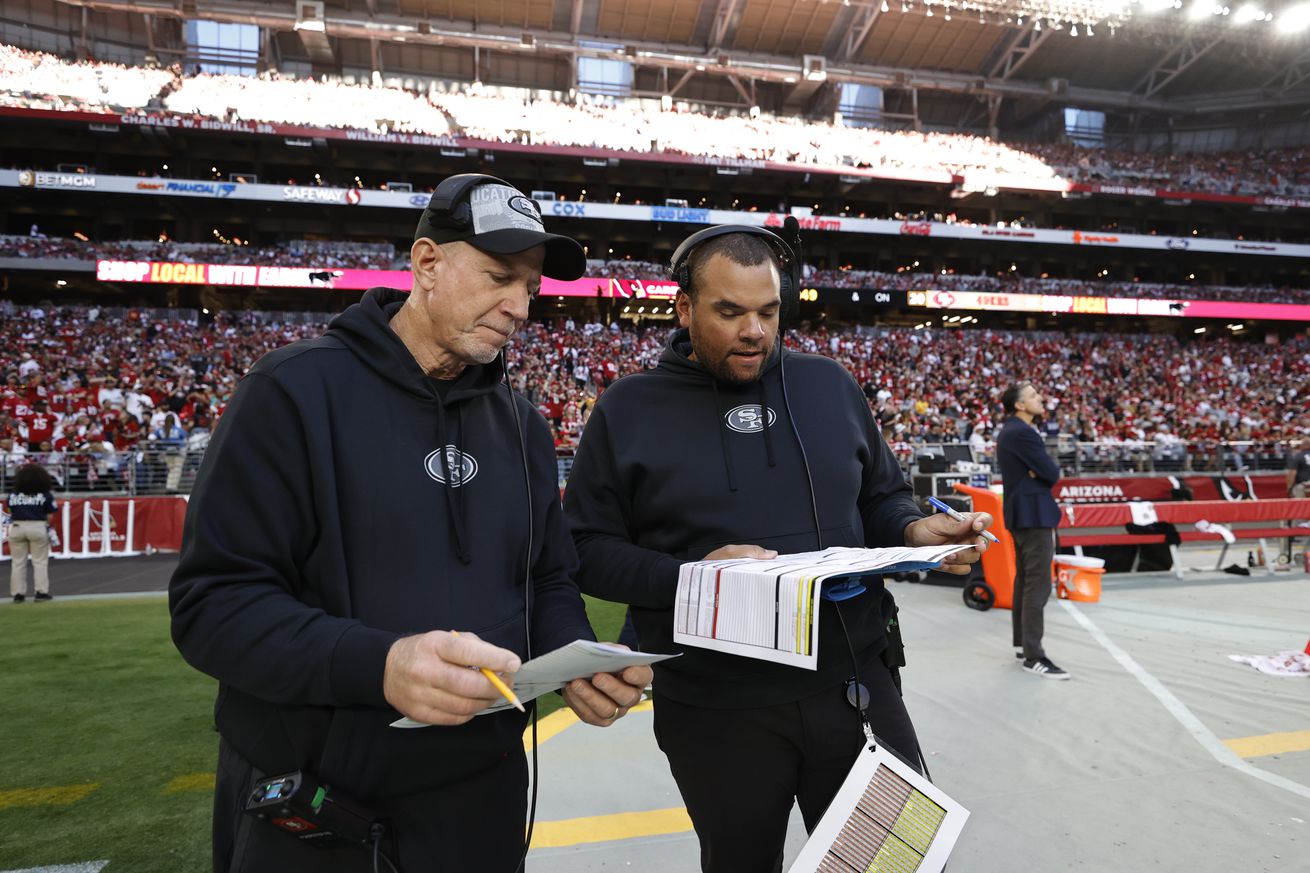
Each coach shared a different perspective on the individual drill in a team sport
The San Francisco 49ers return to training camp Monday and will put the pads on for the first time. You’ll see clips from 1-on-1 drills, which are one of the most popular drills in the sport. It’s also one of the most unrealistic drills in football.
Head coach Kyle Shanahan acknowledged it’s good work for the players but explained the difference between 1-on-1s and team drills:
“It’s good work for people. But one-on-ones are hard for everybody. It doesn’t feel quite the same when it’s 11 on 11 out there. When you’re just in a one-on-one battle, a guy is going to eventually win. Very rarely does someone just get stoned and completely punked in a one-on-one drill, so it always looks like you eventually win.
But it’s really good work for those guys. It’s the reps they need with their hands, the speed of getting off. It’s tough when you don’t have pads on because when there’s not a threat of a bull-rush and things like that, or if they are bull-rushing and they don’t have pads, it makes it a lot tougher.
So again, I take it more, we won’t do that until we have pads. That’s one of my favorite things about Monday. We get pads on, and we get to watch those guys. Sometimes in team drills and stuff, someone can have a bunch of catches or things like that or they can get to the quarterback because of some pressures and stuff, and you don’t know if it’s zone, you don’t know what the situation is. But when it’s one-on-one, you can’t hide, and you have to really evaluate.”
Offensive line coach Chris Foerster is not a fan of 1-on-1s. At all. It’s unfair to somebody— usually the offensive lineman and the defensive back. Here’s why Foerster does not appreciate 1-on-1s:
“I don’t. I get really mad at one-on-ones. Not that I don’t; guys don’t like them because they’re saying that it’s unfair. Yeah, I get that it’s unfair. I get mad because I didn’t realize that front office and media, like in Miami in 2004 when I was there, all of a sudden there would be a tally in the next day’s paper of who won and who lost the one-on-ones. And the guys were furious. If I threw somebody out there for three extra reps and say, ‘Hey, you need to work on X, Y, or Z’ and they’d get beat, they’d go ‘Coach you just,’ and then we’re yelling. It was ugly.
Anyway, my thing is, you go there to work on something. One-on-ones are a great opportunity and a huge disadvantage for you. I don’t care if you get beat every day for three weeks, you’re working on something, right? Certain guys have weaknesses and they’re going to go work on that weakness and they may get just get pounded for a while because they can’t get it.
And then they say, ‘Well, I have to survive the drill now.’ Don’t survive the drill, get better. Who is keeping track of, ‘oh, [DL Nick] Bosa beat Trent, or [Jacksonville Jaguars DL Arik] Armstead killed this guy. Or [OL Aaron] Banks can’t block anybody in one-on-ones.’ And you know, some guys aren’t very good in one-on-ones, but within the setting of an offense or protection, they do a heck of a job.
And yeah, they may show up every now and then in a one-on-one, but at the end of the day, it’s more of a thing for me to work on it. It’s hard to get the rest of the building to understand that, not get them to understand, but it’s the only really live work that you get to see. So you should place some sort of stock in it. But it shouldn’t because you have no idea what I’ve told the guy I want him to work on that day. And you’re like, ‘Oh God, he stinks.’ And yeah, he stinks, because he’s working on it. Yeah. He’s has to get better.”
Keep that in mind as you’re reading tallies from 1-on-1s during the next couple of weeks.